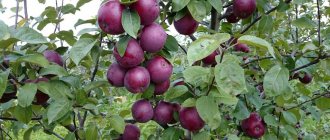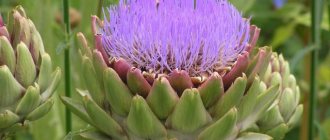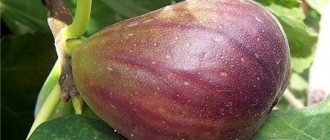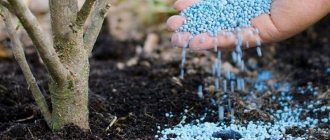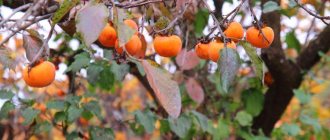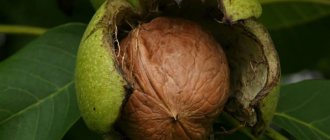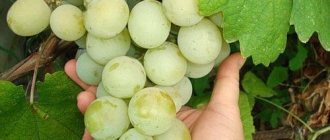Many dachas grow apple, pear, plum and cherry trees. But sometimes you want something exotic. Most often, gardeners' choice falls on apricots and peaches, the fruits of which are tasty and healthy.
But how to grow apricots when the summer is too short and often rainy? Are winters frosty and with little snow? Don’t worry, the “southern guest” is quite capable of surviving all these unfavorable conditions. You just need to help him a little. Let's look at how to get a rich harvest from apricots if the weather in the middle zone is so unpredictable.
Choose your apricot varieties wisely
It all starts with choosing a variety. If you buy an unzoned seedling, the likelihood that it will survive and produce a harvest is minimal. Therefore, buy apricot seedlings only from trusted sellers (in no case from your hands!), Study the features of the zoned variety you have chosen.
If your neighbors in the country grow apricots, ask them for advice on which variety has taken root best. Most likely, they will name something from this list: Northern Triumph, Snegirek, Hardy, Lel, Russian, etc. At the same time, you will be able to evaluate the appearance of the plant and the taste of the fruit if the tree is already bearing fruit.
Blooming apricots decorate the garden in late April - early May.
How many seedlings will you need? Everything again depends on the variety. Self-fertile apricots, which do not require pollinating varieties, can be purchased in minimal quantities. If the variety is self-sterile, you will need at least 2-3 trees with similar flowering periods, and always different varieties. Do you have a large garden? Then plant several apricots at once with different periods of fruit ripening. This will allow you to harvest longer. In a small area, you can propagate the varieties you like by grafting onto a plum or cherry tree.
Read descriptions of popular varieties of apricots in our materials.
- The best varieties of apricots for the middle zone (photos, descriptions, reviews from gardeners)
It is now quite possible to grow this crop even in not the warmest climates!
- 7 best winter-hardy apricot varieties
A detailed description with photographs of winter-hardy varieties of apricots that can be grown in central Russia and in the Moscow region.
- The best self-fertile apricot varieties (photos, descriptions, care tips)
An autofertile tree will not need pollinating insects or additional plants on the site.
It is best to buy a ready-made 2-year-old apricot seedling. But you can successfully germinate a tree from a seed. True, the germination rate of apricots is quite low (up to 50%), and in the first year after planting another quarter of the plants die, so it is worth taking at least 50 seeds from ripe fruits.
- 22 plants that can be grown from seeds on the windowsill and in the garden
Familiar plants and exotic guests for home and garden.
Choosing the right variety
In the south of Russia, varieties with high yields and valuable fruit taste are recommended. For cultivation in harsh climatic conditions, frost resistance and frost resistance of the variety, disease resistance, and early ripening of fruits come first.
Crops for cultivation in the Non-Black Earth Region:
- Russian is a self-fertile variety, tree height is 4 m. Winter-hardy, drought-resistant. Large fruits 50-65 g, tasty.
- Monastic - late-ripening, ripens at the end of summer. It has increased frost resistance and disease resistance.
- Iceberg is partially self-fertile, early ripening. High yield.
Varieties zoned for the Urals:
- Mountain Abakan - height 3 m, frost-resistant, yield up to 15 kg.
- Minusinsk ruddy - early fruiting, fruits 20 g of good taste.
- Sibiryak Baikalova is one of the best varieties for areas with unfavorable climatic conditions. Frost-resistant, has large, tasty fruits. Requires pollination.
Varieties for Siberia:
- Khabarovsk - begins to bear fruit in the third year. Blooms at the end of June, early ripening.
- Amur is a tree 3 m high and can withstand frosts down to -38˚C. Has high immunity to diseases.
- The bullfinch is short, up to 1.5 m. The fruits are 20 g, cream-colored with a burgundy blush. Increased frost resistance.
South of Moscow you can use cultivars:
- Northern Triumph - fruits up to 50 g, high yield and taste of fruit.
- Saratov ruby is an orange-purple colored fruit that is very tasty. Stores in the refrigerator for up to two months.
When purchasing apricot seedlings, it is important to know whether the variety is self-fertile or whether it requires a pollinator. In the latter case, you need to plant at least a couple of plants.
Properly plant apricot seedlings on the site
Planting an apricot is a fairly simple matter; it is only important not to make the hole too deep (50-70 cm is enough) and not to overdo it with fertilizer. The usual dose per tree: 500 g of superphosphate, 150-200 g of ammonium nitrate, 100 g of potassium sulfate, 1 kg of lime, 1 glass of wood ash, 8-10 kg of humus.
Much more often, the amount of harvest is reduced or absent altogether if the planting site is chosen incorrectly. The following points should be taken into account:
- cardinal direction - southwest, southeast or west, less often - south;
- location – warm, sunny place, protected from cold winds;
- soil – light, loose sandy loam or loam, without stagnant moisture, pH 6-7;
- distance – 3-4 m between plants, 5-6 m between rows.
Plant apricot seedlings only in spring, when the soil is well warmed up.
- How to plant a tree in spring
Planting trees in spring: everything you need to know about it.
Apricot, the planting and care of which have specific features in the middle zone, prefers to grow away from other trees. Apple trees, pear trees, cherries and plums often suppress the development of the plant, which can affect the amount of harvest. Also, you should not plant apricots next to raspberries or currants, from which various pests can migrate to the tree.
Description and characteristics of culture
A fruit tree from the plum genus is on average 5–8 m in height. Young red-brown branches with smooth bark as they grow become gray in color with numerous longitudinal cracks in the bark. The crown is spreading, often round in shape.
The leaf blades are arranged alternately, the petioles are long and thin. The leaf shape is a wide oval with a pointed end. The edge of the leaf is jagged, the surface is veined. The length of the green plates is 6–9 cm.
Flowering time depending on the growing region is April or May. Single flower baskets up to 3 cm in diameter. The five-petalled white or pink flowers appear before the foliage emerges.
The fruits appear from June to August. The color of the rounded fruits with a longitudinal groove on the surface is yellow-red. The surface of the peel is fleecy, can be plain or with a spotted “tan.” The pulp is fibrous, can be crispy, juicy and sweet. There is only one hard stone with a ribbed-grooved surface; inside it contains a flat seed, similar to an almond. The weight of the fruit varies from 5 g to 80 g.
The fruiting period of cultivated trees begins in the 3rd–5th year of life and lasts up to 40 years. Apricot, thanks to its deep root system, is resistant to drought; most varieties can withstand frost from -25°C to -30°C.
Did you know? Burnt apricot kernels are a component for the production of organic mascara.
Water and feed apricots according to the rules
Caring for apricots involves regular watering and fertilizing. It is also useful to mulch the tree trunk circles with sawdust or compost with a layer of 5-10 cm.
How to water an apricot
During the season, 5 waterings are usually carried out:
- in April, before flowering (if there was little snow in winter and the soil was dry);
- at the end of May, 2 weeks after flowering;
- 2-3 weeks before fruit ripening;
- after harvest;
- in October-November after the leaves fall (moisture-charging irrigation).
If the summer is hot, you can carry out additional watering. But remember that apricot does not like stagnant moisture, this often leads to cracking of the fruit. But there is no need to overdry the tree, otherwise the fruits will not form.
Pour 5-8 buckets of water under trees 3-5 years old, 7-10 years old and older - 12-15 buckets.
How to feed apricot
Apricots need nutrition, but it is important not to overfeed the plants, especially when they are young. Try not to overuse nitrogen fertilizers when feeding fruit-bearing trees, otherwise flowering will occur late. When apricots reach 3 years of age, apply 3-5 fertilizings every season, combining them with watering.
Experienced gardeners have different opinions on the amount of fertilizing. Some experts believe that 1-2 fertilizing per year is enough, because... Too active application of fertilizers during the season makes it difficult for the tree to overwinter in the future. When choosing fertilizing and its frequency, try to take into account the composition of the soil on your site and the condition of the tree.
| № | Apricot feeding time | Fertilizer application rate |
| 1. | April, before flowering begins | Root feeding with ammonium nitrate (20 g per 1 sq.m of trunk circle) or chicken manure diluted in a ratio of 1:15. |
| 2. | 2 weeks after flowering | Root feeding with ammonium nitrate (20 g per 1 sq.m of trunk circle) or chicken manure diluted in a ratio of 1:15 + phosphorus-potassium fertilizers (1 tbsp potassium sulfate and 1.5 tbsp superphosphate per 10 l of water; per 1 sq.m - one bucket of solution). |
| 3. | A month after the second feeding | Complex fertilizers: ammophoska, azofoska or nitroammophoska at the rate of 30 g per 1 sq.m of tree trunk circle. |
| 4. | At the end of August, after harvest | Foliar feeding with superphosphate (25 g per 10 liters of water; 2-3 liters of solution for a young tree and 5-10 liters for an adult), as well as a solution of ash at the root - 2 cups per 10 liters of water. |
| 5. | In October-November | 40-60 g of superphosphate, 40 g of potassium sulfate per 1 sq.m. Once every 2-3 years - add dolomite flour (30-40 per 1 sq.m.) and fertilize with compost or humus (3-5 kg per 1 sq.m. with embedding in the soil to a depth of 15 cm). |
Apricot responds very well to fertilizing with wood ash. It can be poured into the tree trunk during the season at the rate of 120 g per 1 sq.m.
Landing rules
The planting site must be prepared at least two weeks before the event so that the soil has time to settle a little. Choose a place for planting that is sunny, but protected from drafts. Groundwater should not come closer than two meters to the surface, since this is the depth to which apricot roots usually go. If this rule is not followed, it becomes necessary to erect a small mound that will raise the seedling to the required height, saving its roots from contact with the aquifer in the future. However, unlike an apple or pear tree, apricot can easily tolerate close proximity to groundwater.
Apricot loves sunny, open places, but protected from northern drafts
It is not recommended to plant apricot on the south side of the site, since in this case the growing season of the tree begins too early and the tree loses its winter hardiness.
In Siberia, planting is done on a hill to prevent rotting of the root collar. It is best to plant apricots on a mound, which should be flat to protect the roots from freezing.
The hole for planting apricots should be spacious and at least 70 cm in diameter and depth
A spacious planting hole is dug - 70 cm in diameter and 70 cm in depth. Apricot has one peculiarity - its root system is twice the diameter of the crown, so a distance of at least three meters is maintained between seedlings (if several trees are planted). In the Urals, this size increases to five meters.
A mixture of mineral and organic fertilizers is placed at the bottom of the pit. It consists of humus (2-3 buckets), a glass of ash, 400 grams of potassium sulfide and 700 grams of superphosphate.
To make it easier for apricot to take root in a new place, regardless of the region of growth, it is recommended to buy a seedling with a closed root system in a specialized store or nursery. The best option is a biennial plant with a well-developed root system.
Apricot does not like clay soils because they are poorly saturated with oxygen and retain moisture for a long time. To correct the situation, in addition to local soil, peat and coarse river sand are added to the planting pit, which are mixed in a 1:1:1 ratio. If the soil is sandy or sandy loam, it is necessary to increase its moisture capacity and fertility. To do this, a layer of clay 20-30 cm thick is laid at the bottom of the planting hole, and dead wood, brushwood or grass is placed on top of it to maintain moisture. Next will come the top fertile layer of soil mixed with the nutrient mixture.
A peg is driven into the middle of the hole, to which the seedling will later be tied - this is mandatory protection from the wind in the first years of the apricot’s life.
Pruning your apricot
youtube.com
Like other fruit trees, apricot needs regular pruning. At the same time, it is important to carry out not only sanitary and formative pruning, but also regulatory pruning, which will allow you to control the number of ovaries and fruits. The fact is that the apricot cannot do this on its own; as a result, the abundantly fruiting tree exhausts its strength ahead of time. Thus, it is better to opt for a slightly smaller amount of harvest than to lose the varietal tree altogether.
Apricots tolerate frequent and light pruning more easily than sparse and large-scale pruning, so do not forget about this annual procedure.
You will find detailed information on pruning apricots in our articles.
- From seedling to mature tree - all about spring pruning of apricots
Pruning apricots in spring - diagrams, useful tips for beginners, plus video.
- Pruning apricots in autumn - diagrams and useful tips for beginners
Apricot is not able to regulate fruiting itself and may die from exhaustion. To prevent this from happening, it is important to trim the tree on time.
Protect apricots from diseases and pests
Unfortunately, apricots quite often suffer from diseases and pests. Trees can get sick with moniliosis, verticillium, clasterosporia and other dangerous diseases. Among the pests, aphids, codling moths and leaf rollers cause great harm to apricots. Preventive measures will help you save your harvest.
Apricots in the spring, before the buds swell, and in the fall, after leaf fall, should be sprayed with a 3% solution of Bordeaux mixture or a 0.5-1% solution of copper sulfate. And for protection against pests - Fitoverm, Bitoxibacillin, Aktara, etc. Use catch belts. Also, do not forget to prune on time; in the fall, be sure to whiten the trunks and remove all fallen leaves.
- Apricot diseases and pests: how to recognize and fight?
We save apricots from dangerous diseases and insect pests.
